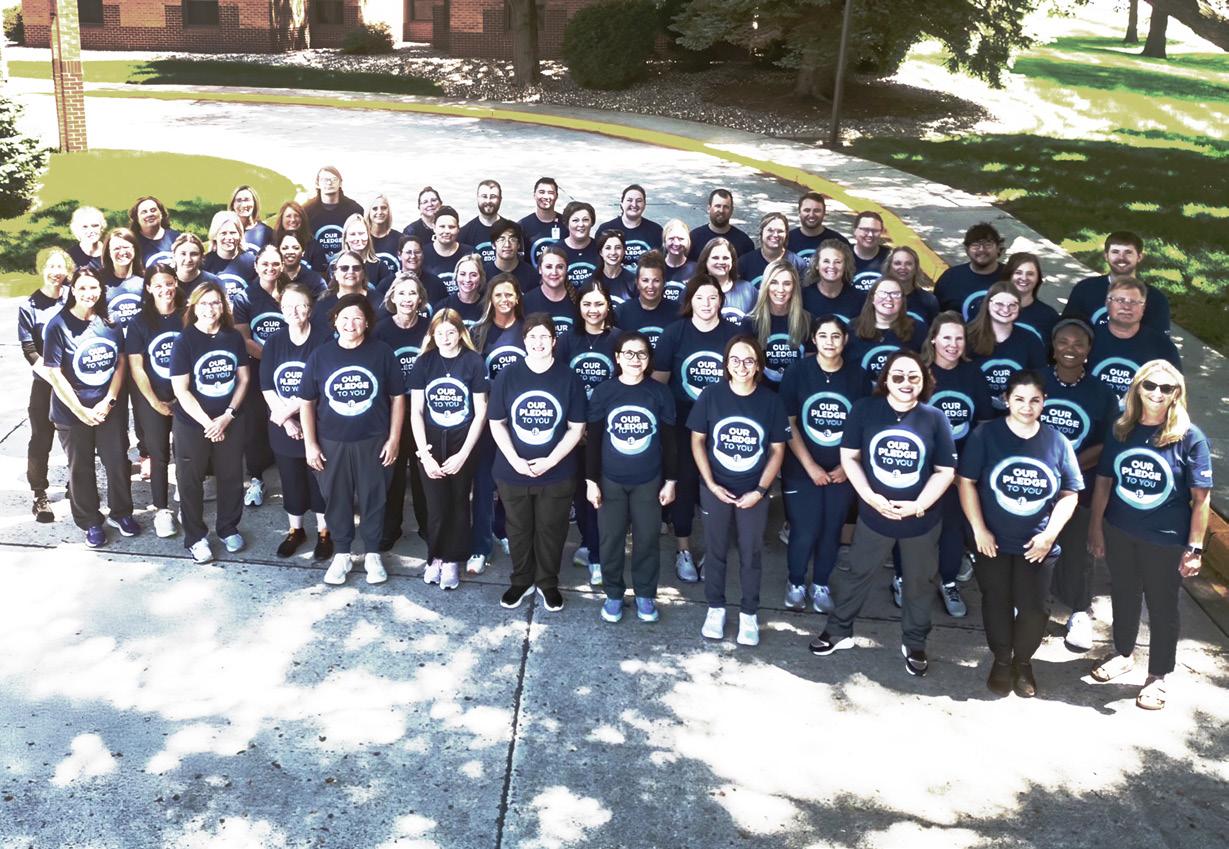

STRENGTHENING OUR COMMUNITIES
A LETTER FROM SIOUX FALLS MARKET PRESIDENT AND CEO ANDY MUNCE
At Sanford Health, we believe that everyone, everywhere should have access to worldclass health care close to home. As the largest nonprofit provider of rural health care in the U.S., we are committed to our mission to care, comfort and cure. We’re proud to extend that mission beyond the walls of our facilities to support our patients and residents in ways that enhance community well-being even more.
I am pleased to introduce the 2nd edition of the community commitment report for Sanford Health in the Sioux Falls region. In it, we demonstrate not only our cutting-edge approach to affordable, high-quality care delivery but also how we work together with our communities to find solutions that combat the barriers keeping people from living their healthiest lives.

Operating in both suburban and rural areas across the Sioux Falls region, we are deeply rooted in communities throughout Iowa, Minnesota, Nebraska and South Dakota. It is our duty and privilege to provide expanded access to essential primary care clinics and in-demand specialties, as well as clinician outreach services for underserved populations in our most remote and rural areas.
Please continue reading to learn more about how we advance care, improve public health and strengthen our communities.
I want to extend a very special thanks to our Sanford Health employees and community partners for showing up every day, making this important work possible. I am grateful to work alongside them to fulfill our promise to be here for all, here for good.
With appreciation,

Headquartered in Sioux Falls, South Dakota, Sanford Health serves more than 2 million patients and more than 425,000 health plan members across 320,000 square miles. As the nation’s largest nonprofit rural health system, Sanford Health is committed to improving the health and well-being of those we serve. We are proud to provide comprehensive services and support that respond to the current and future needs of our communities through high-quality care, enhanced public health programs and solutions that reduce health disparities.

SIOUX FALLS REGION NUMBERS
• Medical centers: 14
• Surgical centers: 1
• Clinic locations: 76
• Senior living centers: 49
KEY RECOGNITIONS
• Level I Adult Trauma Center and Level II Pediatric Trauma Center
• Five-time Magnet designation for nursing excellence
• 11 Performance Leadership awards for excellence in quality from The Chartis Center for Rural Health
• Newsweek “2025 Best-in-State Hospital”
• Recent Accreditation Council for Graduate Medical Education accreditations:
• Emergency medicine residency program – the first of its kind in South Dakota as well as a broader region including Idaho, North Dakota, Montana and Wyoming
• Gastroenterology fellowship program – the first of its kind in North and South Dakota
In 2024, Sanford Health invested more than $15 million in communities throughout the Sioux Falls metro area and our South Network, which includes predominantly rural locations in Iowa, Minnesota, Nebraska and South Dakota, to provide essential services to improve care access and positively impact personal health and community well-being.
RURAL CARE CHALLENGES
People living in rural America face unique challenges. They are more likely to have fewer resources to access care and more likely to experience higher rates of poverty, food or housing insecurity, and chronic disease – often leading to poorer health outcomes. Two-thirds of Sanford Health patients live in rural areas, which is why our commitment to care extends beyond the walls of our hospitals, clinics and long-term care facilities. Now, as ever, we remain active in the communities we serve and invest substantial resources to boost opportunities for everyone to reach their optimal health.
COMMUNITY HEALTH NEEDS ASSESSMENT
Every three years, Sanford Health conducts a Community Health Needs Assessment (CHNA) to learn more about the health and well-being of the populations we serve. The CHNA allows us to identify and address unmet health needs through local partnerships and initiatives. Responses from past surveys guide our work and build upon previous progress to develop new community health initiatives, offerings and programs.
COMMITMENT
CARING FOR OUR PATIENTS AND OUR COMMUNITIES
As the nation’s largest rural nonprofit health system, Sanford Health is committed to enhancing the well-being of those we serve.
In 2023, Sanford Health’s Sioux Falls Market invested over $280 million in our communities, providing essential services and programs aimed at improving access to care and positively impacting health and well-being. The following is detailed information regarding Sanford Health’s Sioux Falls Market 2023 Form 990 for the health services division.
$73 million in uncompensated care from reduced-cost health care services provided through financial assistance or services left unpaid due to financial hardship or lack of insurance.
$73 MILLION
$62 MILLION
$58 MILLION
$62 million in absorption of underpayments from Medicaid and Medicare for acute care services. Medicaid and Medicare reimburse health systems but at a rate that is often lower than the actual cost of providing care. Sanford Health is dedicated to treating all patients, regardless of their ability to pay.
$58 million in subsidized health services not reimbursed by other sources. Sanford Health offers these clinical services despite financial loss in order to ensure access to essential care for our communities.
$33 million in community programs related to childcare, mentoring, violence prevention, disaster readiness and public emergency preparedness.
$22 million in community health improvement services that safeguard or improve public health and expand access to health care services.
$17 million in medical research studies or investigations to increase health and disease knowledge.
$15 million in educational programs that train health care professionals, helping to ensure our communities have a strong health care workforce for years to come.
CARE FOR ALL
Sanford Health is proud to provide care to anyone who comes to us in need, regardless of their ability to pay. As a nonprofit organization, we provide a robust community care program to help patients who are uninsured or are experiencing financial hardship access to care. Sanford Health never denies medically necessary care to patients with medical debt.
FINANCIAL ASSISTANCE POLICY
Sanford Health offers financial assistance for patients experiencing medical emergencies and challenges that require immediate care. This assistance, which can range from cost reductions to complete forgiveness, is provided to patients with a demonstrated financial need.
COMMUNITY RESOURCE CONNECTIONS
Sanford Health has a database to help patients find and access community resources. The website sanford.findhelp.com compiles information about housing, food, transportation and child care. After entering their zip code, an individual can see free or reduced-cost programs nearby. While the resource is available to anyone in need, Sanford Health patients receive a link to access it from their after-visit summary or their My Sanford Chart account.
In 2024, referrals to sanford.findhelp.com increased nearly 80% from 2023. The most common search topics were related to food, housing, health and financial needs.
Clinicians, nurses and other caregivers can also navigate the site on behalf of patients and refer them directly to assistance. The site is translated into multiple languages and allows anyone to print, test or email information.
CARE MANAGEMENT
Sanford Health’s care management services connect families with vital resources to help create healthier, more cohesive and empowered communities. Care management emphasizes preventive care, encouraging patients to proactively engage with their health care, manage chronic conditions and adopt healthier lifestyles. There are many ways care management helps patients, caregivers and health care providers improve outcomes.
• Improved access to services: Ensures timely and appropriate care
• Enhanced social support: Strengthens connections to foster well-being
• Increased resource efficiency: Maximizes the impact of resources
• Empowerment and self-sufficiency: Encourages patients to proactively engage in their care
• Improved well-being: Addresses holistic needs to ensure better health outcomes
• Advocacy and systemic solutions: Improve access to care for all
• Better trust in systems: Builds confidence in health systems through long-term relationships
ACCESS
EXPANDED ACCESS
Rural populations are more likely to travel long distances for health care, especially subspecialty services. Patients may face barriers paying for fuel and lodging, taking time off from work, or arranging child care. Sanford Health is committed to ensuring our patients have access to high-quality care no matter where they live or what health challenges they face. As an integrated health system, we are uniquely positioned to improve the overall health of the populations we serve through new, innovative care delivery models. Open 24/7, 365 days a year, we are available whenever and wherever our patients need us – with the promise of bringing care closer to home.
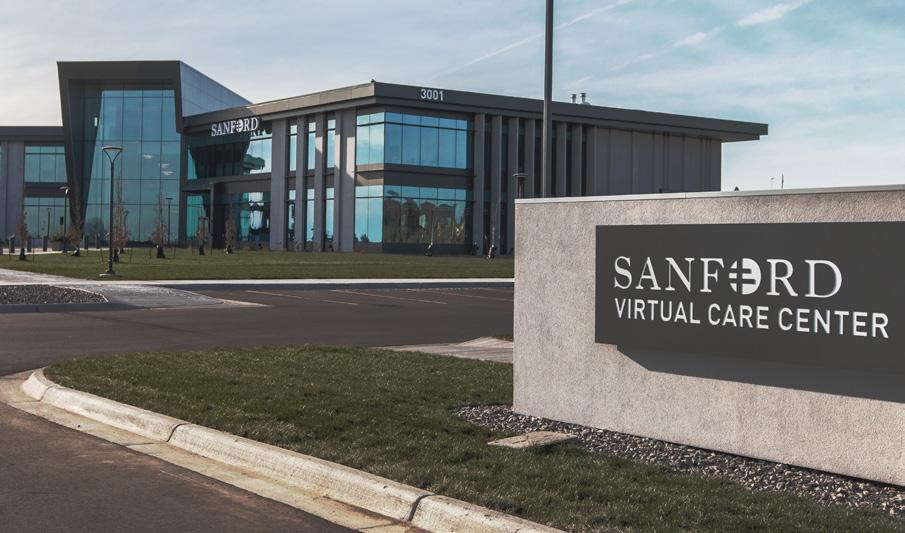
VIRTUAL CARE CENTER
The new Sanford Virtual Care Center (VCC) is a flagship command center that supports virtual health care in rural communities. Two-thirds of our patients who used virtual care in the last year live more than 30 miles from a major medical center. The VCC continues to enhance and expand virtual care offerings. Since 2011, Sanford Health has served over 1.7 million people virtually, saving our patients 42.3 million miles.
Made possible by a $350 million gift from philanthropist T. Denny Sanford aimed at supporting rural health initiatives, the VCC is now home to Sanford Health initiatives focused on three core pillars: education, innovation and clinical care.
• The Education Institute is a learning environment for caregivers to advance their virtual care skills and develop new skills to ensure the highest quality of care and the best patient experiences. It includes simulation spaces where medical students, residents, clinicians and nurses can use augmented reality and virtual reality tools to train for the next generation of care delivery.
• The Innovation Center is the first accelerator space in the nation that specifically focuses on AI tools and emerging technology designed to advance rural care delivery. Technology partners collaborate with providers to co-develop new software, hardware and care delivery models. In addition, a patient and family experience room allows patients to test new digital health tools and provide their feedback.
• In the clinical service delivery space, both patients and caregivers will experience the flexibility and convenience of on-demand care. This space will be home to My Sanford Nurse, direct-to-consumer acute care and virtual nursing.
The VCC has a direct connection to Sanford Health’s satellite clinics, giving patients the option to get care close to home with additional support and expertise available virtually.
TRAUMA CARE
Sanford Health patients across the upper Midwest, including in South Dakota, northwest Iowa and southwest Minnesota, have access to expert trauma care at Sanford USD Medical Center in Sioux Falls. It’s the state’s only Level I Adult Trauma Center and Level II Pediatric Trauma Center. A Level I Trauma Center provides the highest level of surgical care to trauma patients and has a full range of specialists and equipment available 24 hours a day.
AIR AMBULANCE
In rural, sparsely populated areas, air ambulance services are crucial for patients who need immediate care. Sanford Health operates a fleet of AirMed helicopters and four airplanes from Sioux Falls.
With medical experts on board, these aircraft transport patients from emergency scenes or other health care locations for lifesaving care. Sanford AirMed crews can stabilize patients suffering from cardiac arrest, trauma, burns, stroke, sepsis and more, and they specialize in providing adult, pediatric, neonatal and maternal care.
Over the past five years, AirMed has provided care to more than 10,000 patients, each traveling an average of 200 miles per transport. These specialized medical teams have served patients across 15 different states.
ENHANCED CANCER TREATMENTS AND SCREENING TECHNOLOGY
Sanford Worthington Cancer Center’s $3.4 million investment in a TrueBeam linear accelerator has enhanced cancer treatment in the community and surrounding areas. The linear accelerator is the latest radiation technology. It improves accuracy, cuts treatment times and mitigates side effects.
In the Sioux Falls region, Sanford Health has installed 3D mammography technology at five locations. Patients now have access to clearer pictures, which can help detect breast cancer at earlier, more treatable stages.
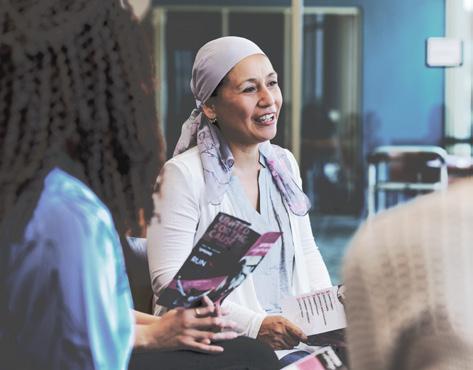
3D mammograms now available in more rural clinics
By Mick Garry
Patients in several rural Sanford Health communities now have increased access to the gold standard in breast cancer detection: 3D mammograms. The technology provides a clearer picture, helping to detect breast cancer at its earliest and most treatable stage.
Sanford Health recently installed in-house 3D mammography technology in Brookings, Chamberlain, Canby, Luverne and Vermillion.
These Sanford Health locations now offer a more convenient path to the most effective screening tool available in detecting breast cancer.
Shorter path to cancer screenings
“In addition to the technology that detects cancer earlier, it’s going to be much more convenient,” said Lori Sisk, senior director of the Sanford Canby. “In the past we’ve had a mobile screening unit come through once a month. But what if you had to be at work or you were out of town the day the truck was here? Then you had to wait until next month or go elsewhere.”
Sanford Health recommends annual mammograms starting at age 40. The 3D version is a safe and low-dose X-ray that creates multiple images of the breast at different angles. It provides a clear picture for radiologists and gives doctors a detailed view of overall breast health. The screening itself is no more time-consuming than the two-dimensional versions.
In many cases those living in rural areas in central and southeastern South Dakota and western Minnesota who want 3D mammograms had to travel an hour or more to get screened. With 3D mammography available in more Sanford locations, patients can get screened closer to home.

As an example, the Sanford Chamberlain Medical Center serves Brule, Lyman and Buffalo counties in central South Dakota. In the past, patients in that region might have had to drive 70 miles or more for a 3D mammogram.
“Anytime you improve access to care, you make it easier for someone to come and get a service,” said Erica Peterson, senior director of Sanford Chamberlain. “It allows them to potentially improve their health outcome. Anytime we can make things simpler and more accessible for people, the more likely they are to utilize the service and take those preventive measures seriously.”
‘A
better look at everything’
The connection to digital technology for mammograms allows for storing and transferring images electronically and gives radiologists the opportunity to use software to help read or interpret screenings. Most importantly, it can be a much better way for women with denser breast tissue to get accurate screening information.

“The 3D mammograms give us a better look at everything,” said Teri Biggins, supervisor, diagnostic radiology at the Sanford Chamberlain Medical Center. “Dense breast tissue can hide cancer or mimic cancer so this gives us an additional view. In the past we were having to send patients to Sioux Falls to get that care.”
The technology was made possible with funds from the Sanford Health Foundation as well as local hospital foundations in Chamberlain and Vermillion. It’s one more example of the commitment Sanford Health has placed on access to top-flight care in rural communities.
Shortly after Sanford Health announced it would be providing access to 3D mammography in Canby, the schedule for screenings began to fill up. It was evidence of the need and also the importance of making it available.
“Sanford is prioritizing getting advanced technology out to our rural communities,” Sisk said. “We’re excited about giving our patients the opportunity to stay in the community for these kinds of screenings.”
Originally published on February 2, 2024
Care

BEHAVIORAL HEALTH
Increasing access to behavioral health care is a vital part of Sanford Health’s effort to address community health needs. Sanford Health provides comprehensive behavioral health services including psychological evaluations, substance use disorder treatments, in-school child programs and a nationally recognized eating disorder program.
As a rural health care system, we understand the unique barriers our communities face in accessing behavioral health care, and we are working to address these challenges so every patient can get the support they need, when they need it.
VIRTUAL BEHAVIORAL HEALTH EMERGENT ASSESSMENT
The virtual behavioral health emergent assessment program offers rural partners throughout Minnesota, South Dakota and North Dakota virtual access to board-certified psychiatrists. The service is available in emergency rooms in rural communities and inpatient settings. Since the program launched in December 2023, over 620 patients have accessed emergency behavioral health care virtually.
Through the program, Sanford Health also began new, streamlined processes to coordinate admissions to inpatient psychiatric facilities. A Sanford Health nurse contacts inpatient facilities, sends documentation and shares real-time updates with a patient’s provider. The process has helped patients get care faster and gives local nurses and providers more time to spend on patient care.
THE LINK
The Link, a community triage center in downtown Sioux Falls, is available for individuals facing a nonviolent behavioral health crisis or substance or alcohol abuse. They can access immediate treatment and referral to further support services. The facility is a collaboration between the City of Sioux Falls, Minnehaha County, Sanford Health and another local health system. In its inaugural year, The Link facilitated over 4,000 triage encounters and aided more than 1,400 individuals on their journey toward recovery.
HEALTHY BEHAVIORS HYGIENE PROGRAM
To help reinforce healthy behaviors in vulnerable populations, Sanford Health in Chamberlain, South Dakota, has implemented a points-based health hygiene program that provides diapers, bedding, nursing pillows, infant swings, bathtubs and other items to pregnant, low-income patients. The items are meant to incentivize healthy choices about prenatal care, nutrition, drinking and smoking. Since January 2019, there have been more than 330 participants.
PROGRAMS FOR YOUNG PEOPLE
Sanford Sports athletic trainers attend a Behavioral Health Education Awareness and Response Development (BeHEARD) course to increase their knowledge, skills and confidence in supporting youth with a wide range of behavioral health concerns. BeHEARD is an interactive virtual course created by experts in behavioral health, educational design and evaluation.
Childhood obesity has become an epidemic in the U.S., leading to the development of chronic health conditions earlier in life. The Sanford fit program is designed to get kids to think differently about their choices in a fun and engaging way. It focuses on four key elements: food, movement, mood and recharging. Through partnerships with state governments, WebMD, Discovery Channel and more, Sanford fit provides free online resources to instill sustainable, healthy habits and empower children, families and communities to make healthy lifestyle choices.

Sanford fit encourages kids to build healthy habits for life
By Sanford fit
We know that kids can be picky eaters, have big emotions, and often spend a lot of time on screens. But with the right guidance and support, they can also learn to make healthier choices when it comes to food, behavior and physical activity.
Sanford fit, established in 2010, is a community health program by Sanford Health designed to empower caregivers, teachers and community members with tools to help children build healthy habits for life.
Sanford fit offers resources that help kids build strong, positive habits that will set them up for a lifetime of well-being.
“We want to educate, motivate and inspire children of all ages to live a balanced, healthy lifestyle,” said Amy Baete, fit’s program director.
“A lot of children’s health programs focus exclusively on exercise or healthy eating. What makes us unique is that we emphasize the importance of getting enough sleep, recharging without a screen, and understanding how our energy and mood affect the choices we make.”
Free resources for building healthy habits in kids
The Sanford fit program offers a wide range of expert-backed resources, including classroom lessons, videos, slideshows, printables, articles, interactive games, and activities. Each resource is grounded in the latest research to ensure it’s both effective and user-friendly – all completely free to access.
“Our content addresses today’s most critical health and wellness issues in a way that’s aligned with age-appropriate social and emotional learning skills and national health education standards,” Baete said.
By offering all the resources online for free, fit is giving everyone the tools to make a positive difference in the lives of children.
“Evidence suggests that kids who feel supported by their family and friends to become active and make healthy food choices are more likely to participate in those behaviors,” Baete said. “Together, we’re helping kids build a foundation for healthy habits that can last a lifetime.”
‘Do the most good’
Sanford fit is part of Sanford Health’s key initiatives created with a philanthropic gift from Denny Sanford.
“Mr. Sanford’s vision is to invest in where you can do the most good. And we’ve done a really incredible job of that with this program,” Baete said. “Knowing that our work helps kids feel happier and better about themselves is incredibly motivating.”
Sanford fit’s resource library has grown to over 500 free resources, reaching more than 17 million people across 200+ countries. The program continues to expand its online
community, with thousands of resources being downloaded, reflecting the growing reach and impact of its work. With a strong base of email subscribers and millions of views across its social media platforms, fit continues to engage a growing audience. This success has garnered widespread recognition: Sanford fit has earned Digital Health Awards for excellence in social media and video content over multiple years. Additionally, the team has received prestigious DANDA awards, highlighting the ongoing quality and influence of their efforts.
To address the growing teen mental health crisis, Sanford fit has expanded its focus to include teen-specific resources. In partnership with BeHEARD and with support from First International Bank and Trust, the program launched Teen Mental Health Resources aimed at supporting teens’ well-being and providing essential support for families. The program continues its mission to raise awareness and combat the stigma surrounding teen mental health.
Fitness in the community
Beyond the online materials, the fit team is also bringing the program to life in community spaces. For example:
• Interactive fitZones in various locations offer children the opportunity to engage in fun, educational activities like wheelchair races, virtual reality bicycles, and dance gaming systems.
• Wellness centers and community spaces across the region offer fitZones that promote physical activity, including classes like ninja warrior training and other movement-based activities for kids.
• Sanford fit remains committed to advocating for pediatric hospital wait spaces that make young patients feel seen and valued. In collaboration with Sanford Children’s clinics across the enterprise, several clinics now feature thoughtfully designed waiting areas that provide sensory paths, yoga walls, educational opportunities, and inclusive, meaningful messages to support children and their families during their visit.
• Community events and collaborations with local schools to engage kids in activities that promote healthy habits.
• Collaboration with Sanford PROMISE (Program for the Midwest Initiative in Science Exploration) to bring young learners a video lesson about the science behind healthy choices and the kidneys.
Creating healthy habits for lifelong wellness
At its core, fit is an investment in the future of children.
“Recent data from the CDC indicates that 20.7% of children ages 6 to 11 are living with obesity. Rates of youth mental illness are on the rise. Only one in three children is active every day,” Baete said.
“This innovative children’s health promotion program strives to be the trusted source for children’s health and wellness resources, fostering a brighter future where every child has the opportunity to thrive. By cultivating healthy habits early on, we are investing in the well-being of our next generation and building a healthier society for years to come.”
Sanford fit will continue its mission to provide valuable, impactful resources for children, families and caregivers. The team is excited to expand their teen resource library further and strengthen partnerships with clinics to enhance pediatric wait spaces.
In addition, Sanford fit is committed to increasing its community presence by hosting events and engaging directly with families to ensure their resources reach those who need them most.
Originally published on January 10, 2025
SUPPORT
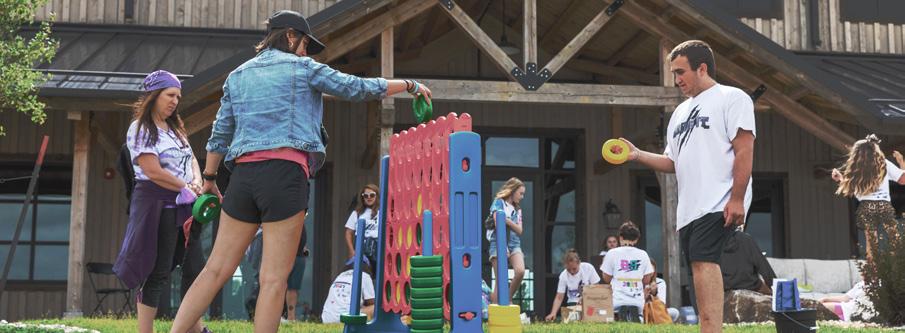
COMMUNITY OUTREACH
Social barriers, such as a lack of access to healthy foods, stable housing, transportation, education and employment, as well as poverty, are particularly acute in rural areas. Sanford Health is active in the communities we serve and invests substantial resources to drive more opportunities and better health for all.
In 2024, Sanford Health provided significant financial support totaling more than $15 million to 169 nonprofit organizations serving communities in Sioux Falls and throughout the region.
UNITED WAY
Sanford Health has long partnered with United Way to positively impact local children, vulnerable adults and people in crisis. Each year, Sanford Health hosts a significant employee giving campaign across six locations in South Dakota and Minnesota. Our employees contribute thousands of dollars to United Way efforts annually.
ADDRESSING FOOD INSECURITY
The Sanford Children’s Hospital in Sioux Falls operates a wellness pantry called Kids’ Kitchen. It provides food and essentials to patients in need. In partnership with Feeding South Dakota, Kids’ Kitchen distributes over 5,500 pounds of food weekly and serves approximately 2,000 individuals each month.
Since opening in 2022, the pantry has expanded to a second location on the Sanford USD Medical Center campus.
Sanford Health is a proud member of the South Dakota Healthy Nutrition Collaborative (SDHNC), which supports access to nutritious foods. More than 105,000 residents of the state, including children and older adults, currently experience food insecurity. SDHNC aims to improve health outcomes through education, resource-sharing and advocacy.
CHILDREN’S ADVOCACY
Sanford Health fully funds and operates Child’s Voice, a nationally accredited child advocacy center in Sioux Falls that provides multidisciplinary medical evaluations for children who may be victims of abuse and neglect. The services help reduce trauma for
the child and non-offending family members and strives to improve long-term outcomes. Many of the victims and families Child’s Voice serves have very few resources. About 80% of them are on insurance aid programs or without insurance. There are no copays for services at Child’s Voice, and the family is not billed the remaining balance insurance does not cover.
We are a Cribs for Kids National Infant Safe Sleep Initiative partner. Through this program, Sanford Health follows the safe sleep guidelines recommended by the American Academy of Pediatrics and provides training programs for health care team members, families and caregivers. In 2023, nearly 100 safety approved sleep spaces were distributed to families in need. Additionally, lactation consultants and parenting educators delivered online and in-person classes to hundreds of parents and guardians, parents-to-be and child care providers.
NO-COST OPIOID OVERDOSE PREVENTION
In partnership with Emily’s Hope, an organization dedicated to removing the stigma of substance use disorder through awareness, education and prevention, Sanford Health has installed naloxone boxes at Sanford USD Medical Center in Sioux Falls, South Dakota. The boxes provide public access to free opioid overdose-reversing medication, also known as Narcan. This collaboration builds upon our existing work with Emily’s Hope through the Post-Overdose Response Team (PORT), which connects overdose survivors with recovery resources and follow-up support.
FALLS PREVENTION
According to the National Council on Aging and the Centers for Disease Control and Prevention (CDC), 1 in 4 Americans aged 65+ fall each year and 20% are injured as a result of their fall.
As part of the South Dakota Fall Prevention Coalition, we offer a variety of evidencebased fall prevention programs to which providers can refer at-risk patients. Stay Active & Independent for Life (i.e., SAIL) classes are strength, balance and fitness based and specifically designed for adults ages 65+.

The Community Aging in Place, Advancing Better Living for Elders (CAPABLE) program in Sioux Falls, South Dakota, and surrounding communities supports adults ages 60+ years old or those with a physical disability. The goal of the program is to increase mobility, functionality and the capacity to age at home. The program integrates services from an occupational therapist, a registered nurse and a maintenance professional who work with an individual to set goals that improve health, independence and safety. Participants learn new skills and exercises and how to work with home modifications.
Additionally, Good Samaritan hosts falls prevention screening events and follows a CDC falls prevention strategy known as STEADI. The initiative is about “Stopping Elderly Accidents, Deaths & Injuries.” STEADI features three core elements, which are screening for fall risks, assessing risk factors and reducing risk with tailored interventions.
Sanford NP reaches out with free books at child visits
By Simon Floss
Sometimes all you need is a good book.
Sue Goodemote is making sure as many children as possible know the feeling of a compelling page-turner.
Free books at visits
She’s a nurse practitioner at Sanford Health in Mountain Lake, Minnesota. She cares for patients of all ages – and she’s responsible for bringing the Reach Out and Read program to Sanford Health’s Mountain Lake, Minnesota, clinic.
“The Reach Out and Read program is where we give books to kids during their well child visits,” said Goodemote.
She said she was inspired by Raising Readers, a Maine-based program.

“My granddaughter is 5 years old. I went to visit one time, and my daughter had taken her to a well child visit. She came home with a book that her pediatrician had given her. I thought that is just a really great idea, and so when I got back, I looked to see if Minnesota had anything like that, and they do – the Reach Out and Read program,” recalled Goodemote.
Turning the page to Mountain Lake
Goodemote facilitated bringing the program to the Sanford Health Mountain Lake Clinic.
She and other clinicians underwent the required online course to become certified.
“It really stresses the importance of reading to the children,” she said.
Mountain Lake is a diverse, small and strong community. Goodemote said during a blizzard, a local business opened its doors for people to stay for free – and served them warm food for free.
The community also rallied together when it came to this program.
“The Mountain Lake Foundation and the Odell Wind Farm each gave us a thousand dollars to purchase books. We’ve been doing it now for probably five years,” she said.
Goodemote said she makes sure to have books in all languages.
“We have a really big Laotian population here in Mountain Lake, and we also have a large Hispanic population,” said Goodemote.
“Our goal is to give a book out at every well child visit until the age of five,” she added.

Mountain Lake isn’t the only Sanford Health clinic involved in the program. The Sanford Westbrook Clinic, Sanford Health Windom Clinic, Sanford Tracy Clinic, and Sanford Luverne Clinics are also enrolled.
Goodemote’s efforts recognized
Goodemote’s efforts to bring this program to Sanford clinics haven’t gone unnoticed. She recently was awarded the Gerald Gilchrist Medical Champion Award by Reach Out and Read organizers.
The annual award is given out to a health care provider who has gone above and beyond to promote literacy and learning.
“Just really an honor. I didn’t expect it. I didn’t even know that they had that award, so it was quite an honor to get it, and I was surprised – they even sent me a little T-shirt to wear and some candy,” she laughed.
Goodemote says right now, they have enough books at their three clinics. However, the program is always looking for book donations.
Promoting learning and family bonding
Goodemote says the importance of reading at a young age can’t be overlooked.
“Kids need to be read to. They need their parents to spend that time. We’ve got to spend time together,” she said.
“I think Sanford’s very committed to the community and the patients that we serve. They want us to do the very best we can do for our patients, and that’s one of the ways we can do it – by giving kids books to read and teaching them to maybe not spend as much time on their tablets and watching TV as it can be fun to read books,” she added.
Originally published on October 4, 2024
DISCOVERY
MEDICAL RESEARCH
Clinical trials are key to advancing the science of medicine and ensuring patients benefit from new discoveries as quickly as possible. Sanford Research, a multisite research institute, is involved in over 300 clinical trials that aim to improve the prevention, detection, treatment and survivorship of a wide range of diseases.
Clinical trial recruitment has historically been centered in larger urban areas. Sanford Health is committed to pursuing cures and improving treatments for diseases that affect communities in rural America. We fund, test and use clinical trial research, data and best practices to generate better outcomes for our patients.
UNDIAGNOSED DISEASES NETWORK
Many children and adults live with complex medical conditions and abnormalities for which the underlying cause remains unknown. The Undiagnosed Diseases Network (UDN) is a research study supported by the National Institutes of Health (NIH) that helps patients living with an undiagnosed disease and their families and works toward solving the most challenging medical mysteries.
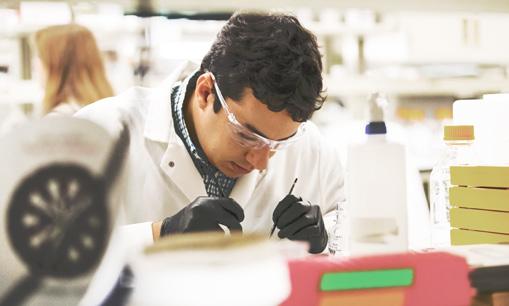
Sanford Children’s Hospital in Sioux Falls, South Dakota, has recently been designated as a new UDN clinical site. Eligible patients experiencing undiagnosed conditions will now be able to enroll in the study, undergo comprehensive evaluations, and have advanced genomic sequencing technologies potentially identify their diagnosis.
ONCOLOGY RESEARCH
Sanford Health is proud to be a part of the National Cancer Institute’s (NCI) Community Oncology Research Program (NCORP), which gives our patients access to state-of-theart clinical trials in or near their communities. There are only 46 NCORP sites throughout the country. Our program typically has between 80 to 100 clinical trials open across most cancer types. Sanford Worthington Cancer Center, located in Worthington, Minnesota, a town with a population of 13,000, is a designated NCORP site. To date, Sanford Worthington Cancer Center has opened 27 clinical trials with over 200 enrollments.
Additionally, Sanford Health is a participant in the NCI’s Connect for Cancer Prevention study. This nationwide study aims to identify how certain factors like geographical location or occupation may lead to a cancer diagnosis in healthy individuals later in life. It uniquely focuses on individuals before they have any indication of cancer. Individuals in the Midwest are often exposed to potentially harmful carcinogens that are unique to rural populations. This study will help us better understand those risk factors.
Sanford Health’s pediatric oncology program in Sioux Falls is part of the Children’s Oncology Group (COG), an NCI-supported clinical trials group that’s the world’s largest organization devoted exclusively to childhood and adolescent cancer research.
Early diabetes detection prevents serious illness in toddler
By Ellen Koester and Aubrey Gilbert
Like most type 1 diabetes patients, Samuel Erdmann got very sick before his doctors caught the disease. He was diagnosed at 5 years old after displaying the classic symptoms – weight loss, excessive thirst, moodiness and frequent urination.
While Samuel got sick, he was lucky enough to avoid hospitalization. At Sanford Health, 70% of type 1 diabetes patients are diagnosed when they develop diabetic ketoacidosis (DKA). DKA is a life-threatening diabetes complication that requires hospitalization.
A study is screening kids early for type 1 diabetes and celiac disease. Its goal is to identify children at risk of developing these conditions before they get sick. It worked for Samuel’s little brother.
Joining the PLEDGE study
The Sanford PLEDGE study is a large-scale screening study of children. Samuel’s mom, Lindsey Erdmann, doesn’t remember how she first heard about it, but she remembers knowing she wanted to enroll her other kids in it.
“We’d already gone through it with Samuel. He was sick when he was diagnosed, and we wanted to avoid going through that again,” she said.
Samuel’s younger brother, Ezra, was 2 years old when he joined PLEDGE. His parents hoped the study would give them some peace of mind.
“We wanted to know if we should be watching for certain signs and symptoms. We didn’t want to think every time he got a cold or flu, ‘wow, maybe this is diabetes starting,’” Erdmann said.
Enrolling in PLEDGE was easy. Erdmann completed a short questionnaire through My Sanford Chart, then all Ezra had to do was give a small sample of blood when he was in the clinic being seen for routine care.
The blood was tested for antibodies that are associated with type 1 diabetes. There are four types of antibodies that could be early warning signs for diabetes. At his first blood draw, Ezra tested positive for two of the types. Within a year, he had all four
An early diabetes diagnosis
Erdmann received a call from the PLEDGE team laying out her next steps after Ezra’s first positive test. His primary care doctor was also notified. Within days, he was under the care of his brother’s endocrinologist and had an official type 1 diabetes diagnosis.
“He didn’t have to live a very long time with extended high blood sugar. We’re hoping he was diagnosed before any permanent damage was done. I’m glad we got the process going before he got sick,” his mom said.
Even though Ezra is very young, he’s adapting well to his new diagnosis and everything that comes with it.
“He cried a little with the first shot but not since. Ezra has seen needles a lot from his brother’s diabetes management, so he understands if we need to do a shot. He even chooses a place for it. We couldn’t have asked for a better transition for him,” Erdmann said.
PLEDGE played a part in that easy transition by helping detect his diabetes before he experienced symptoms.
“We’re glad we did it. I really only see positives for enrolling in PLEDGE. If there’s one reason to do it, it’s avoiding hospitalization or even worse if someone is diagnosed too late,” Erdmann said.
Originally published on June 13, 2025
ADVANCEMENT
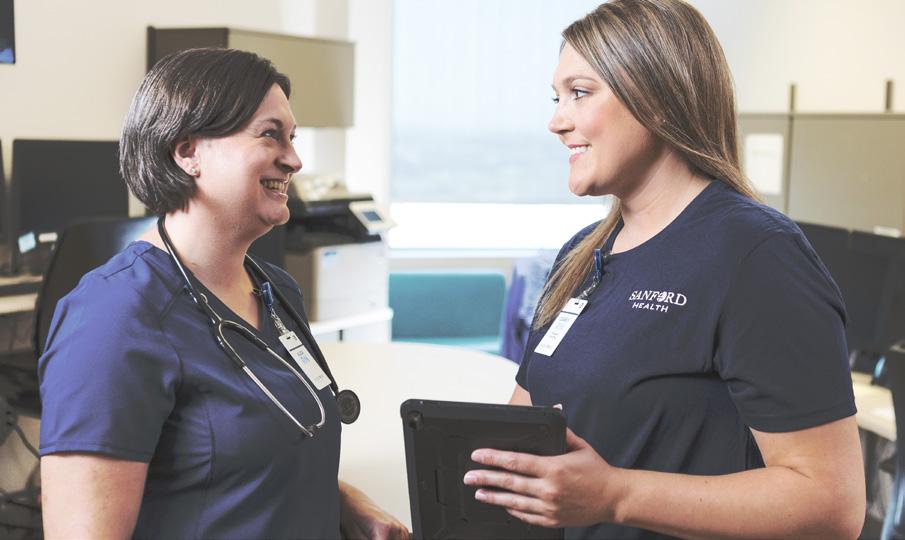
WORKFORCE SUPPORT AND DEVELOPMENT
The future health of our communities rests on our ability to attract and develop highly trained clinicians and employees. Sanford Health has prioritized breakthrough initiatives to support the caregivers we need today and cultivate the workforce we know we will need tomorrow.
PARTNERSHIPS WITH SECONDARY SCHOOLS
Sanford Health partners with local secondary schools to provide hands-on learning experiences, mentorship opportunities and exposure to careers in the medical field. By introducing young people to science, technology, engineering and mathematics (STEM) programs and activities, we can inspire future generations of health care professionals.
Through Aspire by Sanford , students in kindergarten through 12th grades have opportunities to start exploring careers in health care and developing the necessary skills for success in the workforce.
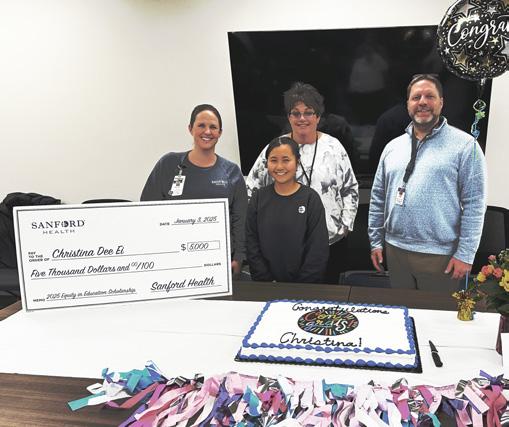
POST-SECONDARY EDUCATION OPPORTUNITIES
Sanford Health facilities serve as training sites for thousands of post-secondary students every year. Opportunities include clinical and non-clinical internships including:
• Extended programs for nursing students
• Preceptor-guided practicum experiences for nursing, allied health and advanced practice students
• Collegiate MedX
• Sanford Program for Undergraduate Research (SPUR)
• Graduate programs in research
• Job shadowing
• An administrative fellowship
• Administrator-in-training programs
Additionally, Sanford Health provides scholarship and sponsorship opportunities not only to high school and university students, but also to current employees. Continuing education assistance, certification reimbursement and scholarships for hospital volunteers, military members, veterans, research students, first-generation or non-traditional college students are awarded annually.

Sanford Health invested $2 million to support the development of the health care simulation center at Southeast Technical College. It was designed as a smaller-scale hospital, allowing students to learn in a health care environment that mirrors where they’ll work after graduation.
FORWARD SIOUX FALLS
Sanford Health is a key supporter of Forward Sioux Falls, which works collaboratively with organizations throughout the Sioux Falls region to advance economic growth and workforce development. One key goal we’re especially proud to impact is to increase the number of health care focused graduates who enter the workforce by 40% by the end of 2026.
Sanford supports the future workforce beyond the classroom
By Simon Floss
Every morning at five bells, you’ll find Sifa Abiya, a pharmacy technician at Sanford Health, clocking in for the day and preparing medicine for patient deliveries.
After completing the pharmacy technician diploma program at Southeast Technical College, she’s been working in this role for about three months. She said it’s part of her calling to health care and cherishes her job. But, if it wasn’t for the Classrooms to Careers program, Abiya might not be working as a pharmacy technician at Sanford.
She participated in the program while she was a senior at Washington High School in Sioux Falls, South Dakota. Abiya said the program offered her a bird’s-eye view into health care, which motivated her to pursue that field as a career.
“I got a lot of experience in that class, which really helped me, because I had a very hard time deciding my major. It really helped me because I was so stressed,” she laughed.

“I learned about the program and was really interested. It’s a big reason why I decided to go into health care,” she added.
Classrooms to Careers 101
Allison Hutchinson is a senior career development consultant at Sanford Health and has played an integral part in bringing the 3-year-old program to life. In her role at Sanford, Hutchinson interacts with high school and middle school students around Sioux Falls, assisting them with career exploration and development.
“I like to say that I open doors and open eyes for students in health care careers,” she said.
Hutchinson explained the main goal of the program is to help students achieve their career goals by “lowering barriers and providing support and the opportunity for high school students to continue their education after high school.
“About half of the students in Classrooms to Careers are first-generation American students. And about two-thirds will be first-generation college students,” Hutchinson said.
Besides Sanford Health, four other partners have played a part in making this program come to life. These partners include the Sioux Falls School District, Southeast Technical College, the City of Sioux Falls, and First Premier Bank.
Classrooms to Careers is taught cooperatively by WHS teacher Jennifer Schelske and STC faculty. While students are still enrolled at WHS, Sanford Health pays for select dual-credit courses.
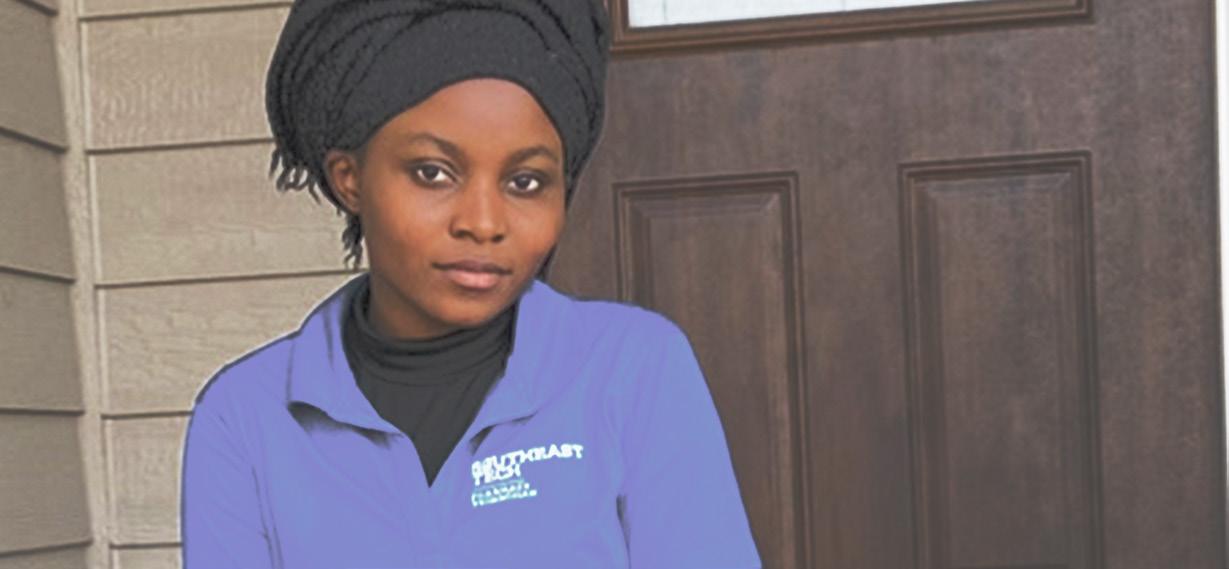
Offering these courses to students in a high school setting with a familiar teacher helps them gain confidence as learners and explore post-secondary opportunities.
Helping students live out their dreams
When asked why she believes so much in the program, tears welled in Hutchinson’s eyes and her voice quivered, as she said she “wants to be part of kids fulfilling their dreams.”
“Sometimes they don’t even have an idea of what that dream could be. So, Classrooms to Careers really opens their eyes to what they could achieve. I’m so grateful for our Sanford family’s commitment to offering a straightforward, supportive path for students who want to set their goals and reach them,” she said.
Hutchinson said the program is available to students at WHS. School counselors share information about the program with students who may have an interest in pursuing a technical college degree and who may benefit from additional supports offered through the program.
Hutchinson is proud to work for a company that prioritizes students and helps them achieve their goals.
“I believe so strongly in this program. We, of course, want to see every Classrooms to Careers student work at Sanford Health. We would love to have them as part of our team, but we don’t have any employment requirements attached to this opportunity.
“We’re widening their perspectives, and these opportunities are not limited to students who think they’re pursuing patient-facing health care careers, or even health care careers in general. We have many students pursuing business degrees, automotive construction, and more. It really is a support of the students and their futures,” she said.
Originally published on August 2, 2022

